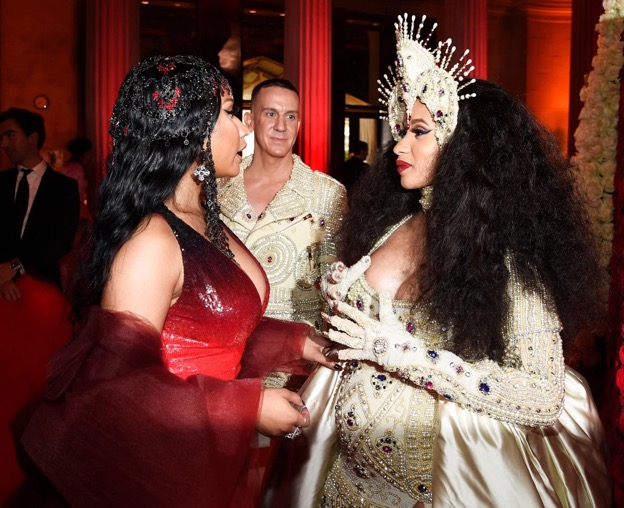
The world of the wealthy is easy to picture. It’s one of glamor and indulgence; one of beautiful people surrounded by beautiful things. It’s a world envied by many but enjoyed by few. In addition to the Rolexes, jewels, and handbags, the elite has also curated something else over the years: much of the world’s most highly regarded art.
The influence the upper class exercises on art is undeniable. One example comes from an ongoing English campaign ‘Panic! What Happened to Social Mobility in the Arts’, which found that, “over a third of the creative workforce in London are from upper-middle class origins” (Brook, O’Brian, & Taylor, 2018, p. 14). By now, it is common knowledge that the top 1% owns over 50% of the world’s wealth – and unfortunately art is included in that. Possession of art is currently one of many displays of wealth – and this one can be conveniently hung on a wall or perched on a mahogany coffee table. But what is art for the average person without the mahogany coffee tables? How is it relevant to an English mother of twins, a Polish economics student, or a French construction worker?
Safe to say, many of us are oblivious to the fact that art, in its infinite forms, surrounds us every day; in architecture, in movies, in books, in furniture, in photographs. It is an intrinsic part of our daily experiences, whether we are privy to it or not, and also often gives us more than we realize. A paper aptly titled “What Is Art Good For?” delves into the value art provides for the human experience, asserting that with communicative and expressive elements, art helps us on the path to understanding both ourselves and others (Sherman, Morrissey, 2017). Art, as a form of human creation embedded within our nature, is something that should be available to everyone for appreciation, enjoyment, and expression. But what happens to the notion of art as a public good when it becomes just another luxury product? The barriers our society has produced between “fine art” and the average person are highly problematic. These barriers restrict something as intrinsically human as creation to the same category as designer handbags. Subsequently, lower classes are not only financially but also psychologically restricted from experiencing art, as many currently perceive art as something relevant primarily to the wealthy and privileged. As private homes, bank hallways, and exclusive clubs fill up with carefully selected pieces, hidden from the light of day, they become warehouses of wealth, with art as the currency (Burns, 2016). Meanwhile, artists without a privileged background are bound to live out the archetype of ‘the starving artist.’
The question of which actors – artists, patrons, curators, etc. – are the main cause of this problem deserves its own discussion. Clearly, however, it is easy to treat art as just another product, as the capitalist market does not entail any restrictions; but I personally doubt that this does our world very much good. An exclusive class of individuals has dominated the art world for too long, leaving everyone else on the outside with the sad misconception that art simply isn’t something that belongs in an average life. In pursuit of giving this problem a spotlight, I will be conducting research for EUrArt delving into the topic of classism and how it contributes to the current paradigm of art in the European Union; one which lacks diversity, minority-representation, and inclusion.
Andy Warhol famously critiqued this problem with his satirical dollar-sign prints. “I like money on the wall. Say you were going to buy a $200,000 painting. I think you should take that money, tie it up, and hang it on the wall. Then when someone visited you the first thing they would see is the money on the wall.” (Warhol, 2014, p 133-134). Art and money may seem inseparable, but that does not mean one cannot exist without the other.
Next up: Are you intrigued by Mia’s research? Then check out the next article by Adam, who looks at activist art to see who has a seat at the table.
By Mia Müller, Searcher of the EUrArt Working Group.
References
- Brook, O., O’Brian, D., & Taylor, M. (2018, April). Panic! Social Class, Taste and Inequalities in the Creative Industries. Retrieved May 13, 2018, from http://createlondon.org/wp-content/uploads/2018/04/Panic-Social-Class-Taste-and-Inequalities-in-the-Creative-Industries1.pdf
- Burns, C. (2016, February 24). Andrea Fraser: The artist turning the Whitney into a prison. Retrieved May 11, 2018, from https://www.theguardian.com/artanddesign/2016/feb/24/andrea-fraser-artist-turning-whitney-museum-prison
- Sherman, A., & Morrissey, C. (2017). What Is Art Good For? The Socio-Epistemic Value of Art. Frontiers in Human Neuroscience, 11, 411. Retrieved from http://doi.org/10.3389/fnhum.2017.00411
- Warhol, A. (2014). The Philosophy of Andy Warhol: From A to B and back again. Boston: Mariner Books.

 The ’Ndrangheta’s Infiltration and Threat to European Institutions
The ’Ndrangheta’s Infiltration and Threat to European Institutions  From Paper to Practice: How Grassroots Norms Undermine Gender Rights in Pakistan
From Paper to Practice: How Grassroots Norms Undermine Gender Rights in Pakistan  Exploited Childhoods: The Role of Global Corporations in Perpetuating and Mitigating Child Labour
Exploited Childhoods: The Role of Global Corporations in Perpetuating and Mitigating Child Labour  Human Rights Challenges in Addressing SLAPPs in Media, NGOs and Journalism in the EU
Human Rights Challenges in Addressing SLAPPs in Media, NGOs and Journalism in the EU 


